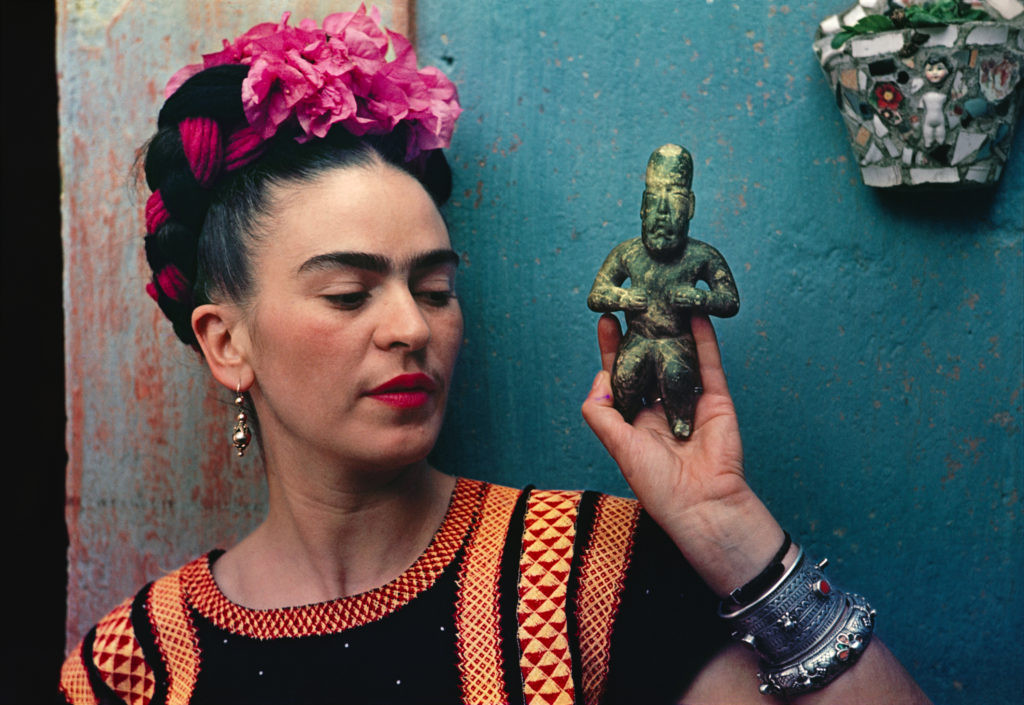
Long Beach Opera presents “Frida” – a review
We may think that artists, highly regarded in the present, have always been recognized as a breed apart and above, but fame is fickle even when the talent seems obvious. In the years after her death in 1954, Frida Kahlo lingered in the immense shadow of her husband Diego Rivera, one of the three tenors of mural painting in Mexico, but slowly she began to emerge as a major artistic figure in her own right.
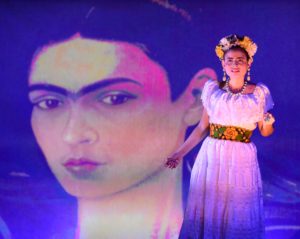
One could say she had the perfect backstory, an indomitable spirit that only quit because her pain-wracked body gave out long before her passions had been spent. She unrelentingly, even unflinchingly, put her life, her very autobiography, into her paintings. She also had a strange, fiery beauty and became a visual icon much like Carmen Miranda many years before. Not least of all, she was a sensuous woman; not afraid of love, and not afraid to show it.
“Frida,” conceived by composer Robert Xavier Rodríguez, premiered in 1991, with a book by Hilary Blecher and lyrics and monologues by Migdalia Cruz. It’s a visual artist’s life in song, and although it’s being presented (in this, its Southern California premiere) by Long Beach Opera, “Frida” often veers into straight theater and even performance. The music, too, like Frida’s life, is nearly boundless, spread out freely, with folk songs, ballads, anthems and classical music snippets swirling in the mix. Which is all fine because while Frida’s heart and soul may have been Mexican, she was exposed to people and art from across the world.
“Frida” is fairly straightforward, easy to follow scenes from a life. Of course it’s compressed, summarized, occasionally embellished for the stage (her paintings, and Diego’s, are projected onto the backdrop), but Rodríguez goes quite the distance in making her a sympathetic and introspective person as well. Diego is in a strong supporting role, but less developed, with much of his personal history skimmed over at best.
Mezzo-soprano Laura Virella is compelling as Frida, and Bernardo Bermudez, a lyric baritone, is a fine match. They don’t sing many arias together, but when they do it’s hard to resist being pulled in and embraced by their voices.
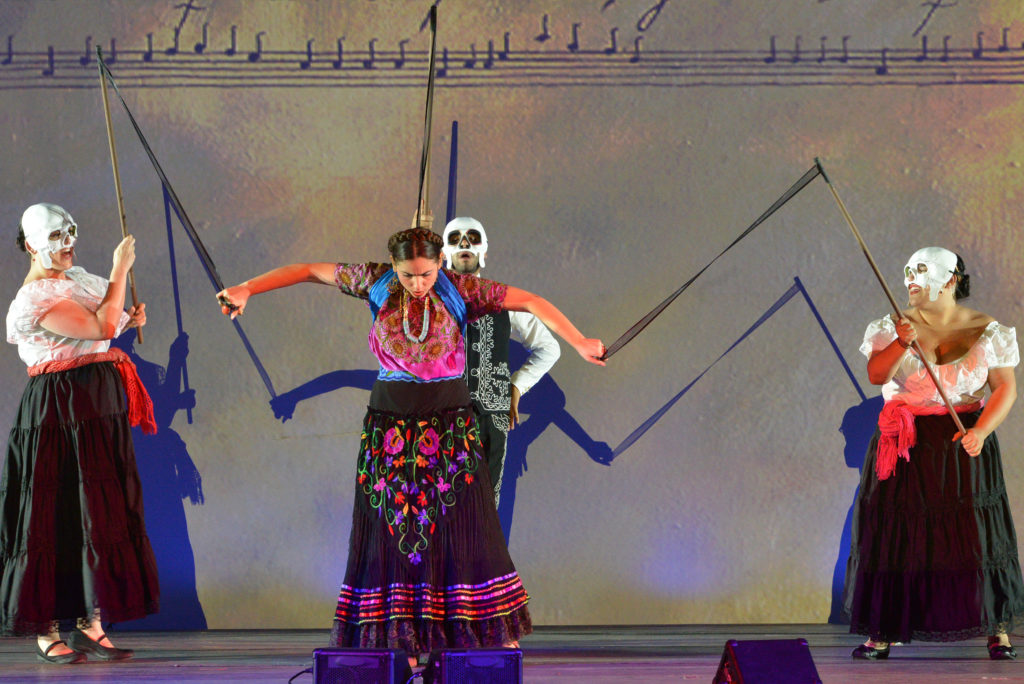
“Frida” is an intimate opera, with a small supporting cast and once again a small “orchestra.” Actually, it’s just an ensemble of six, conducted by Kristof Van Grysperre (although still larger than the string quartet that serenaded us through “As One,” the last work presented by Long Beach Opera). Again, no matter, despite the occasional aural contributions from motorcycles and fireworks, and that’s because “Frida” is being staged outdoors (except for Friday night, see below) at the Museum of Latin American Art in downtown Long Beach. But MoLAA is a venue ideal in spirit, even it it’s at the corner of Alamitos and Seventh Street. That’s due in part to “Frida Kahlo: Through the Lense of Nickolas Muray,” an exhibition of photographs that Muray took of Frida between 1937 and 1946. The images, and in particular the stunning color photographs, are a revelation.
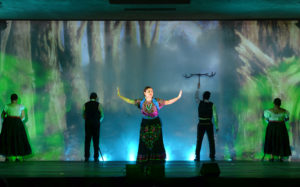
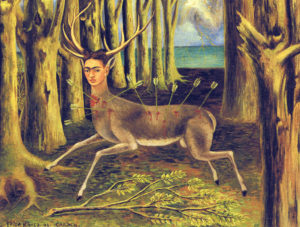
My impression is that “Frida” has received fuller, more fleshed-out productions elsewhere. Here, the supporting cast is minimal, referred to as Woman 1, Woman 2, Man 1, and Man 2 (Alejandra Martinez, Joanna Ceja, Jonathan Lacayo, and David Castillo respectively), with each actor-singer juggling about four roles each (as Frida’s sister, Frida’s boyfriend, Frida’s father, the Rockefellers, the Trotskys, and so on). No complaints, but it would have been nice to have seen an extra face and body or two.
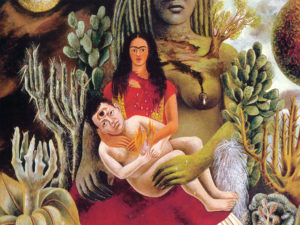
Although sorrow and loss, not to mention Death itself, weave in and out of this work, sensuality and sexuality are underlying factors, and happily the opera doesn’t shy from strong, mature language on occasion, nor does it refrain from the vigorous lovemaking scenes, especially those between Frida and other women (opera has never been for the faint of heart, has it?). They are, of course, tastefully done, and I understand that other productions have included a greater degree of nudity.
Outdoors it can be a little chilly, the chairs are intermittently uncomfortable, and sightlines may not be the best for all concerned, but “Frida” is an enjoyable, engaging experience and one that is certain to send many of its viewers to the internet or to art books in order to dig deeper into the life and times of this astonishing woman.
Frida is being performed Saturday and Sunday at 8 p.m. at MoLAA, the Museum of Latin American Art, 628 Alamitos Ave., Long Beach. It is sung in both English and Spanish, and there are supertitles as well. Tickets, $49 to $150. Two hours before curtain, ticket holders can enter the museum to see the photography show, mentioned above, and there is a pre-performance talk one hour before the show moderated by LBO’s artistic director Andreas Mitisek. Note: “Frida” is being presented at 8 p.m. on Friday (June 23) at Grand Performances, 350 S. Grand Ave., Los Angeles. Also, the 2017/18 season begins Oct. 15 with “The Consul,” by Gian Carlo Menotti, and continues with “The Black Cat,” “The Invention of Morel,” and “The Love Potion.” From Long Beach Opera we have come to expect the unexpected, and we’re rarely let down. (562) 470-7464 or go to longbeachopera.org. ER










